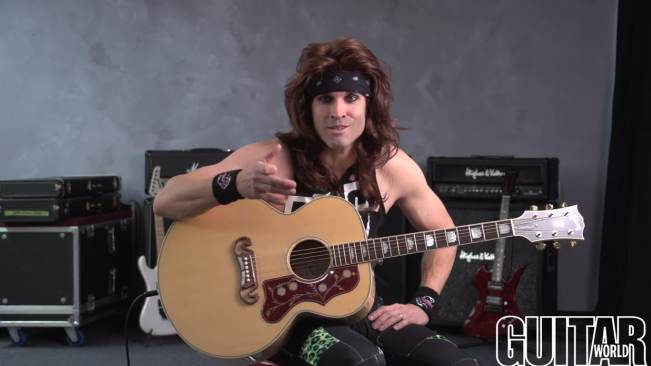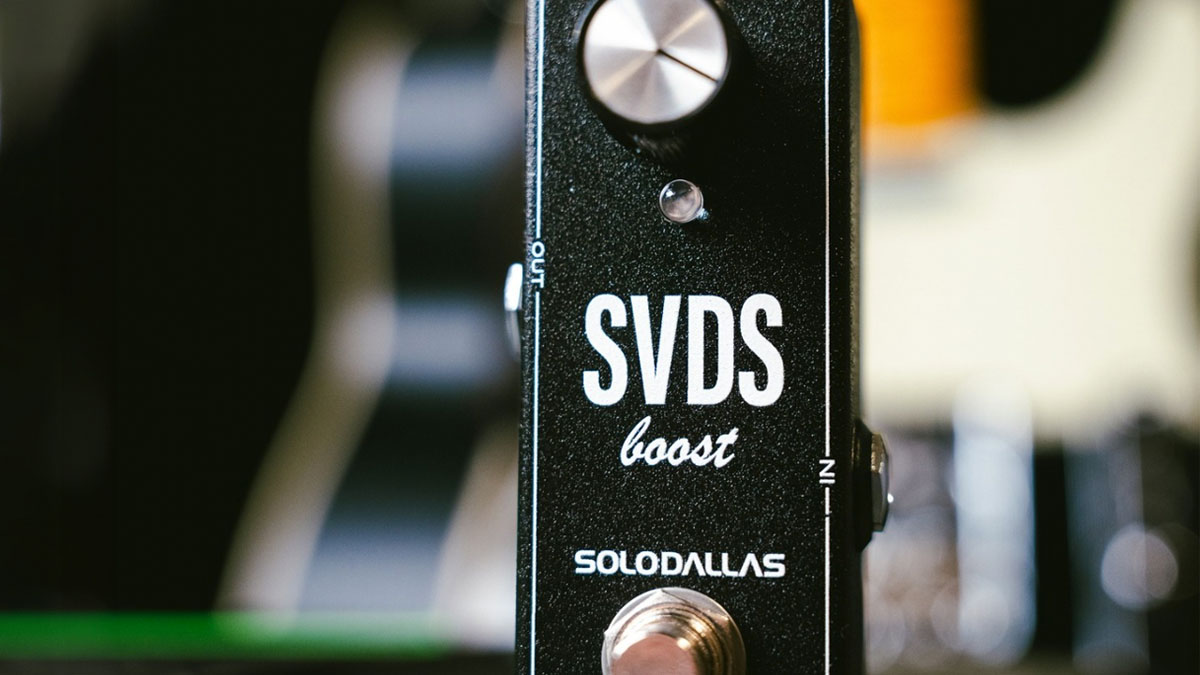Man of Steel with Steel Panther's Satchel: The Beauty of an Acoustic Ballad, and How to Play “The Girl From Oklahoma”

Can anyone deny the beauty of the perfect acoustic metal power ballad?
I, for one, cannot! Steel Panther’s debut release, Feel the Steel, features the much requested “The Girl from Oklahoma,” which is a great example of a song played in this style. And believe me, the song is a hell of a lot better looking than the girl.
All of the song’s guitar parts are performed on an acoustic, tuned down one half step. I fingerpick all the rhythm parts, using my thumb to pick the bass notes on the bottom two strings and my middle finger, ring finger and pinkie to pick the higher strings.
I don’t use my index finger because it’s clasping the pick in the crook of its knuckle, allowing easy access to it when I switch to flatpicking for the guitar solo.
I sound each chord by first picking the low bass note, then simultaneously picking the higher strings in the voicing. FIGURE 1 shows the verse section: after hitting the low G note and then the higher part of the G5 chord, I lightly tap the strings with my pick-hand fingertips to produce a percussive “slap” that serves to keep the beat steady. This technique, which I repeat with the subsequent chords, mostly on beats two and four, additionally serves to mute the strings momentarily, supplying separation and distinction between each chord. Notice that the majority of the voicings used during the verse include the high D and G notes at the third fret on the top two strings; the only time I switch the fingering on these strings is for the A7 and D chords in bars 3 and 4.
FIGURE 2 shows the chorus section, which is performed in a similar manner with a related progression, also in the key of G. I use my fret-hand thumb to grab the low F# bass note in the Dsus2/F# chord in bar 4. For the second ending (beginning in bar 5), I fret smaller, two-note shapes on the A and D strings, major and minor thirds, that gradually slide up the neck, in a way somewhat reminiscent of a lick heard in the Bryan Adams song, ”Run to You.”
The rhythm part for the bridge section, shown in FIGURE 3, starts with an open, “cowboy”-type G7 voicing that resolves to C. I then move to a third-position Cm barre chord and shift that same shape down a fret to Bm, which sets up a VI-ii-V (“six, two-minor, five”) progression in G: E-Am-D5.
My goal for the guitar solo, shown in FIGURE 4, was to play as melodically as possible. The first six bars move between referencing the five chord, D and the one chord, G, and the easiest way to play lines that serve both chords is through the use of the G major scale (G A B C D E F#), as the major triads of both chords—G B D for G major and D F# A for D major—reside within this scale. The only tricky part of the solo, technically, is bar 7, where fast double hammer-ons are followed by alternate-picked 16th-note triplets.
Get The Pick Newsletter
All the latest guitar news, interviews, lessons, reviews, deals and more, direct to your inbox!
